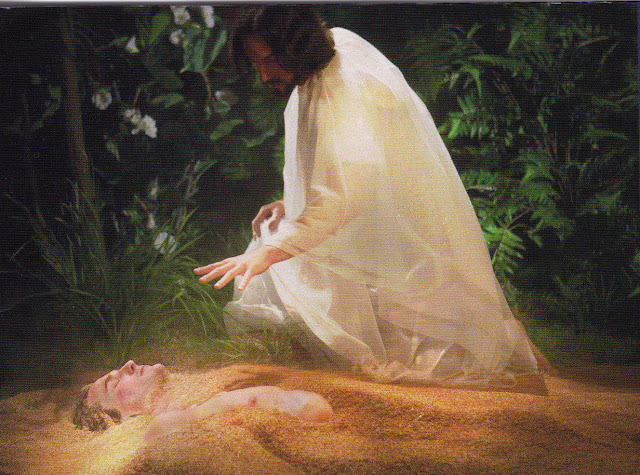
It has been said that the
Old Testament is the New Testament concealed and the New Testament is the Old
Testament revealed. Every promise in the Old Testament arrives in the person of
Jesus Christ in the New Testament. In fact, Jesus explained that He was the
fulfillment of everything that Moses and prophets wrote about (John 5:39, Luke
24:27).
Bible scholars refer to
this modeling of Christ in the Old Testament as narrative typology. A type is a
person, place, thing, or event in the Old Testament that acts as a model to
foreshadow or prefigure a future person or event that is fully revealed in the
New Testament.
The first portrait of
Christ in the Old Testament is Adam. Paul draws a parallel between Adam and
Christ twice. In Romans 5:14 he refers to “Adam, who was a type of the one who
was to come,” and in 1 Cor. 15:45 he makes the comparison between Christ and Adam,
“The first man Adam became a living being’; the last Adam became a life-giving
spirit.”
In Paul’s mind, Christ
came to undo everything that Adam ruined. At every place where the first Adam
failed, Jesus Christ, the last Adam succeeded. Let’s examine some of the
striking parallels and differences between Adam and Christ.
·
Adam entered the
world through a special act of creation (Gen. 2:7). Likewise, Jesus entered the
world through a special act of creation (Luke 1:35).
·
Adam was called
the “Son of God” (Luke 3:38) and so was Jesus (John 3:16).
·
Adam entered the
world sinless (Gen. 3:17-19), Jesus did too (Heb. 4:15).
·
Adam was given
authority over all creation (Gen. 1:29-30) and Jesus claimed this prerogative as
well (Matt. 28:18, Col. 1:15-18).
·
God caused a deep
sleep to fall upon Adam, then He opened Adam’s side which brought forth his
bride, Eve (Gen 2:21-23). In a similar way, Jesus was caused to sleep (die) and
His side was pierced (John 19:33-34) which brought forth His bride, the Church
(Eph. 5:25).
On the same token, the
Bible is very clear that Adam and Christ are strikingly different. There are
many ways in which Christ is far superior to Adam.
·
Adam was made in
the image of God (Gen. 1:27), Christ is God in the flesh (John 1:14).
·
Adam was called a
“Son of God” (Luke 3:38), but Christ causes us to be “sons of God” (John 1:12).
·
For a short time,
Adam was ruler over the old creation (Gen. 1:29-30), but Christ is the ruler
over the new creation (2 Cor. 5:17).
·
All of Adam’s descendants
inherit a sinful nature (Rom. 5:12), but all who are in Christ inherit a
spiritual nature (1 Cor. 15:45).
·
Adam was tempted
in a perfect garden and fell into sin (Gen. 3:6), Christ was tempted in a
desert wilderness and did not sin (Matt. 4:1-11).
- The first Adam turned from the Father in the garden of Eden; the last Adam turned to the Father in the garden of Gethsemane (Luke 22:42).
·
Adam sinned and
became aware of his nakedness (Gen. 3:6-7), Jesus became sin and was hanged in
nakedness (2 Cor. 5:21; John 19:23-24).
·
Adam brought
about the curse of sin, thorns, sweat and death (Gen. 3:17-19), Jesus became a
curse (Gal. 3:13), and in His sacrifice He bore thorns (John 19:2, 5), dripped sweat
(Luke 22:44) and tasted death (Heb. 2:9).
·
In Adam all die, but
all in Christ live (1 Cor. 15:22).
Maybe, Max Lucado summarized
the two best when he wrote, “The Bible is the story of two gardens: Eden and
Gethsemane. In the first, Adam took a fall. In the second, Jesus took a stand.
In the first, God sought Adam. In the second, Jesus sought God. In Eden, Adam
hid from God. In Gethsemane, Jesus emerged from the tomb. In Eden, Satan led
Adam to a tree that led to his death. From Gethsemane, Jesus went to a tree that
led to our life.”[1] -DM
No comments:
Post a Comment